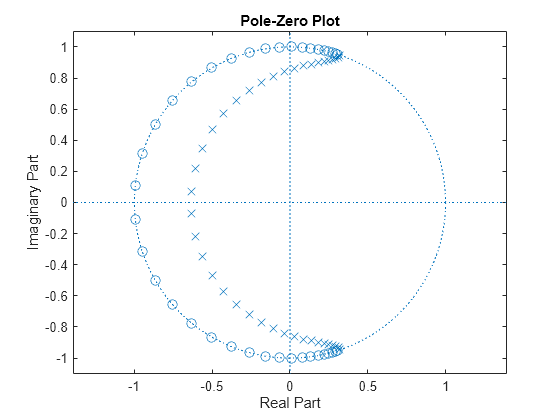zplane
Zero-pole plot for discrete-time systems
Syntax
Description
zplane(
plots the zeros and poles of discrete-time systems in the current figure window.
Specify the zeros in a column vector z,p)z and the poles in a
column vector p. The symbol 'o'
represents a zero and the symbol 'x' represents a pole. The
plot includes the unit circle for reference.
If z and p are matrices, then
zplane plots the poles and zeros in the columns of
z and p in different
colors.
zplane( finds and plots the
zeros and poles of the digital filter represented as Cascaded Transfer Functions (CTF) with numerator coefficients B,A,"ctf")B and denominator
coefficients A. (since R2024b)
Examples
Input Arguments
Output Arguments
More About
Tips
You can override the automatic scaling of
zplaneusingaxis([xmin xmax ymin ymax])
after calling
zplane. This scaling is useful when one or more zeros or poles have such a large magnitude that the others are grouped tightly around the origin and are hard to distinguish.
References
[1] Lyons, Richard G. Understanding Digital Signal Processing. Upper Saddle River, NJ: Prentice Hall, 2004.




